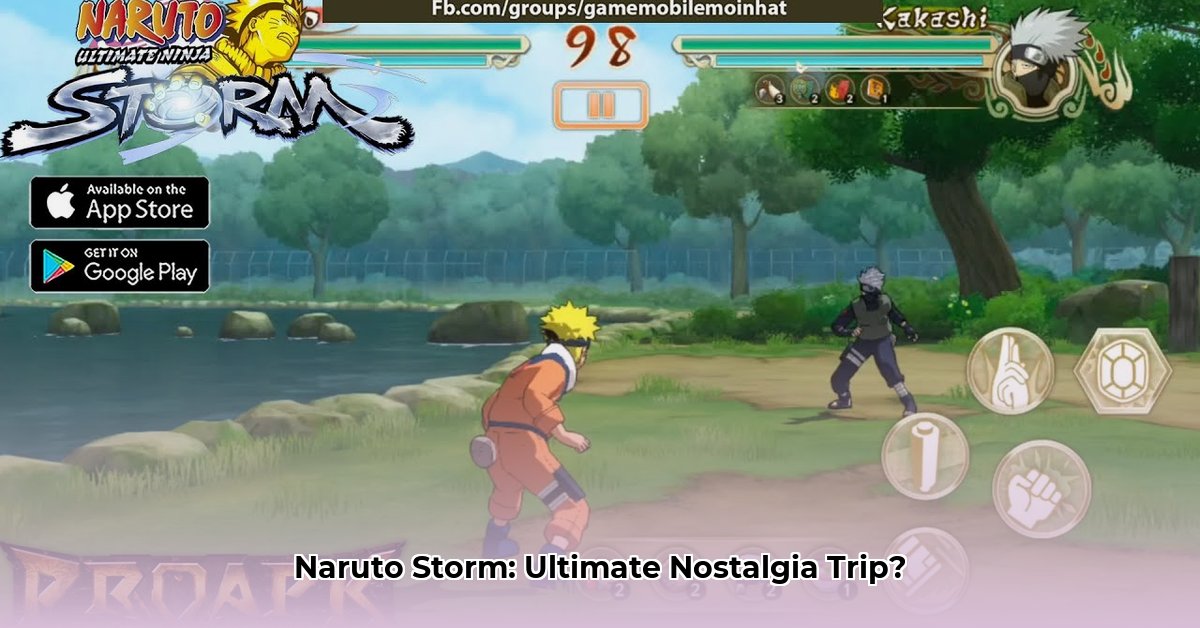
The Naruto Ultimate Ninja Storm series stands as a monumental achievement in anime fighting games, captivating players with its dynamic combat, faithful storytelling, and stunning visuals. This retrospective review delves into each installment—exploring gameplay evolution, narrative fidelity, technical advancements, and ultimately, the enduring legacy of this beloved franchise. Did each game successfully capture the heart of the Naruto universe? Let's find out.
Naruto Ultimate Ninja Storm 1: A Solid Foundation
Naruto Ultimate Ninja Storm (2008) marked a surprising success. Its simple yet effective gameplay introduced players to the fast-paced world of Naruto, offering a surprisingly accessible experience. While the graphics may seem dated now, they were vibrant for their time, effectively bringing the Naruto world to life. The game's faithfulness to the source material, particularly in its adaptation of early story arcs, resonated deeply with fans. While the combat system was relatively basic, its foundation proved incredibly strong, setting the stage for future installments. Was it perfect? No, but its charm and accessibility set a strong benchmark.
Gameplay: Simple combos, basic jutsu, and the introduction of Support Characters delivered an accessible experience, laying the foundation for more intricate mechanics in later installments.
Story and Presentation: A solid, if somewhat simplified, adaptation of early Naruto arcs. The cutscenes, while less impressive visually than later titles, effectively captured the spirit of the anime.
Technical Aspects: Impressive for its time, but the PS3 (and later PC and Xbox 360) limitations are evident in retrospect.
Naruto Ultimate Ninja Storm 2: Refinement and Expansion
Naruto Shippuden: Ultimate Ninja Storm 2 (2011) significantly expanded upon the original's success. The refined combat system felt smoother and more rewarding, thanks to new techniques and a more diverse roster of playable characters. The storytelling expanded to cover more of the Naruto Shippuden arc, delighting fans with a broader and more engaging narrative experience. The visual jump was noticeable, showcasing improved graphical fidelity. Could this be the true best in the series, a perfect blend of accessibility and depth?
Gameplay: More fluid controls, expanded combo possibilities, and an enhanced Awakening Mode significantly deeper combat possibilities.
Story and Presentation: A richer narrative compared to UNS1, covering significant portions of the Shippuden arc—with cutscenes that were a visual step up.
Technical Aspects: A marked improvement in visual clarity and performance compared to its predecessor, showcasing clearer textures and smoother animations.
Naruto Ultimate Ninja Storm 3: Epic Scale and Increased Complexity
Naruto Shippuden: Ultimate Ninja Storm 3 (2013) redefined the series' scope, delivering a visual spectacle unlike anything before it. The scale of battles increased dramatically—and the addition of powerful ultimate jutsus added another layer of excitement. However, this increase in complexity also introduced a steeper learning curve for players. Did the added complexity deliver on its promise, or prove too much for some fans?
Gameplay: Faster, more dynamic combat, introducing ultimate jutsus and a higher level of strategic depth. The sheer visual spectacle heightened the thrill of every clash, creating dynamic and exciting scenarios.
Story and Presentation: The narrative culminated in the Fourth Great Ninja War, providing a thrilling and impactful conclusion to a significant portion of the storyline.
Technical Aspects: A stunning visual leap forward, showcasing detailed environments and impressive character models, but also introducing some noticeable glitches for some players.
Naruto Ultimate Ninja Storm 4: A Polished Conclusion?
Naruto Shippuden: Ultimate Ninja Storm 4 (2016) served as the series' grand finale, delivering a polished and feature-rich experience. Gameplay was refined to a high degree, with smooth controls and a massive roster of characters. However, some argued that the game lacked significant innovation compared to its predecessors, instead focusing on refinements and a satisfying conclusion to the main story arc. Still, the game was undeniably beautiful.
Gameplay: The culmination of prior improvements, offering refined controls, balanced combat, and a vast character selection.
Story and Presentation: An incredibly faithful and emotionally resonant adaptation of the final Naruto arc, closing the story in a wonderfully satisfying way.
Technical Aspects: The pinnacle of the series' technical achievements, boasting stunning visuals, detailed character models, and polished animations.
Comparing the Storm Series: A Summary Table
| Game | Gameplay | Story & Presentation | Technical Aspects |
|---|---|---|---|
| UNS 1 | Accessible, foundational | Solid adaptation of early Naruto, basic cutscenes | Impressive for its time, but shows its age |
| UNS 2 | Refined combat, expanded roster | Broader narrative coverage, improved cutscenes | Noticeable improvement in visuals and performance |
| UNS 3 | Epic scale, increased complexity | Climax of the Fourth Great Ninja War, heightened emotionality | Stunning visual upgrade, some performance issues reported |
| UNS 4 | Polished, refined combat, vast roster | Faithful adaptation of the final arc, emotionally resonant | Best visuals in the series, polished animation |
The Enduring Legacy: A Stormy Impact
The Naruto Ultimate Ninja Storm series profoundly impacted the anime fighting game genre. Its success proved the potential of faithful adaptations, blending accessible gameplay with high-quality visuals and engaging narratives. Even today, many modern anime fighters bear the hallmarks of its innovative approach, highlighting its enduring influence. The question remains: Will we see a return to the Naruto fighting game universe? Only time will tell.
⭐⭐⭐⭐☆ (4.8)
Download via Link 1
Download via Link 2
Last updated: Sunday, May 04, 2025